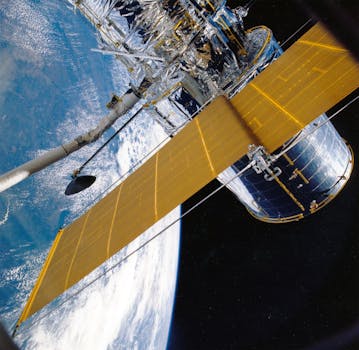The Future of Satellites: Revolutionizing Global Communication and Exploration

The Future of Satellites: Revolutionizing Global Communication and Exploration
The future of satellites holds tremendous promise for advancing global communication, space exploration, and scientific research. With rapid advancements in technology, satellites are becoming increasingly sophisticated, enabling new applications and opportunities. From providing high-speed internet access to remote areas to facilitating cutting-edge space missions, satellites play a vital role in shaping our understanding of the universe and improving life on Earth.
One of the most significant developments in the field of satellites is the emergence of small satellite technology. Small satellites, also known as CubeSats, are miniaturized satellites that weigh less than 1.33 kilograms and are approximately the size of a shoe box. These tiny satellites are revolutionizing the space industry by providing affordable and accessible opportunities for scientific research, technology demonstration, and commercial applications. Small satellites are being used for a wide range of purposes, including Earth observation, communication, and space weather monitoring.
Advancements in Satellite Technology
Recent advancements in satellite technology have enabled the development of more sophisticated and capable satellites. High-throughput satellites, for example, are designed to provide high-speed internet access to remote and underserved areas. These satellites use advanced technologies such as beam-hopping and beam-forming to provide fast and reliable internet connectivity. Another significant development is the emergence of quantum satellites, which use quantum entanglement to enable secure communication over long distances.
Satellite constellations are also becoming increasingly popular, with companies like SpaceX and OneWeb launching thousands of small satellites into low Earth orbit. These constellations provide global coverage and enable a wide range of applications, including communication, navigation, and Earth observation. The use of artificial intelligence and machine learning algorithms is also being explored to improve satellite operations and enhance their capabilities.
Applications of Satellites
Satellites have a wide range of applications, from providing critical infrastructure for global communication and navigation to facilitating scientific research and space exploration. Satellites are used for Earth observation, weather forecasting, and disaster response, as well as for providing television broadcasting and broadband internet services. They are also used for military and defense applications, such as surveillance and communication.
The use of satellites in space exploration is also becoming increasingly important. Satellites are being used to study the universe, from the Sun and the planets to distant galaxies and cosmic phenomena. They are also being used to search for signs of life beyond Earth and to study the habitability of other planets. The European Space Agency’s Gaia mission, for example, is using a satellite to create a highly accurate three-dimensional map of the Milky Way galaxy.
Challenges and Opportunities
Despite the many advancements and applications of satellites, there are also challenges and opportunities that need to be addressed. One of the biggest challenges facing the satellite industry is the issue of space debris. As the number of satellites in orbit increases, so does the risk of collisions and the accumulation of debris. This can pose a significant threat to the safety and sustainability of space operations.
Another challenge is the issue of regulatory frameworks and international cooperation. As the use of satellites becomes more widespread, there is a need for clear and consistent regulations to govern their use and ensure that they are operated safely and responsibly. International cooperation is also essential to address global challenges and ensure that the benefits of satellites are shared equitably among all nations.
Conclusion
In conclusion, the future of satellites holds tremendous promise for advancing global communication, space exploration, and scientific research. With rapid advancements in technology, satellites are becoming increasingly sophisticated, enabling new applications and opportunities. From providing high-speed internet access to remote areas to facilitating cutting-edge space missions, satellites play a vital role in shaping our understanding of the universe and improving life on Earth. As the satellite industry continues to evolve, it is essential to address the challenges and opportunities that arise and to ensure that the benefits of satellites are shared equitably among all nations.






